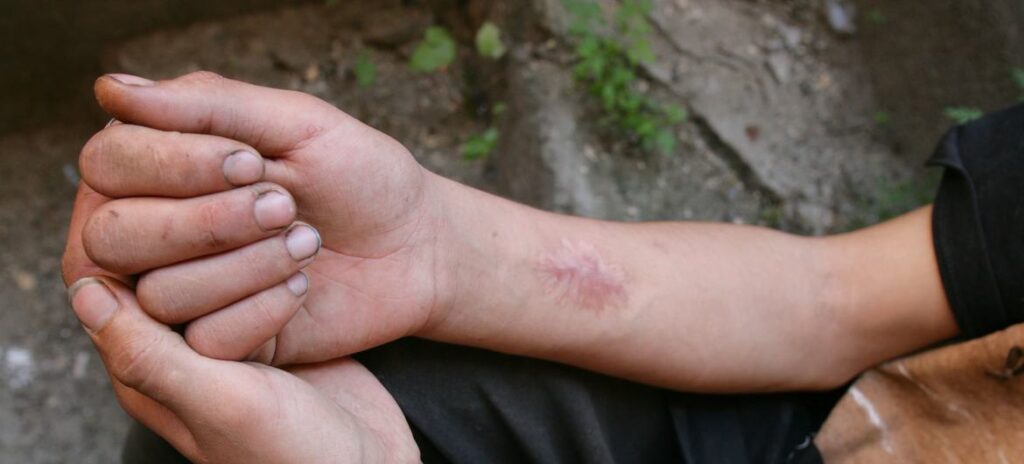Eastern Europe is grappling with a troubling reality: it’s the only region in the world where deaths from HIV/AIDS are on the rise. A 2024 report from UNAIDS shows a 34% increase in AIDS-related deaths in Eastern Europe and Central Asia between 2010 and 2023. While the rest of the world has made strides in reducing HIV-related mortality, countries like Russia, Ukraine, and Belarus face growing challenges. This article, crafted by the journalists at TheMors, explores why this is happening, what it means for the region, and how the trend can be reversed. Our aim is to give you a clear, honest look at this public health issue and what’s at stake.
- The Numbers Tell a Stark Story
- What’s Driving the Increase?
- Testing and Treatment Gaps
- Stigma Keeps People in the Shadows
- Weak Prevention Efforts
- Policy and Funding Shortfalls
- The Ripple Effects of the Crisis
- Overburdened Healthcare Systems
- Social Fallout
- A Regional Challenge
- Stories from the Ground
- Paths to Change
- Better Testing and Treatment Access
- Stronger Prevention Programs
- Breaking the Stigma
- Policy and Funding Fixes
- A Global Context
- Looking Ahead
The Numbers Tell a Stark Story
According to UNAIDS, Eastern Europe and Central Asia reported 38,000 AIDS-related deaths in 2023, up from 28,000 in 2010. New HIV infections in the region have also risen by 20% over the same period, bucking the global trend of a 39% decline. This makes Eastern Europe an outlier in the fight against HIV/AIDS, where advancements in treatment and prevention have saved millions of lives worldwide.
Russia accounts for the lion’s share of cases, with an estimated 1.1 million people living with HIV. Ukraine and Belarus follow, though smaller countries like Moldova and Kyrgyzstan also face significant challenges. The question is: why is this region struggling when others are succeeding?
What’s Driving the Increase?
The rise in HIV/AIDS deaths stems from a mix of social, economic, and systemic issues. Here’s a closer look at the key factors.
Testing and Treatment Gaps
Getting tested for HIV and accessing treatment remains a hurdle for many in Eastern Europe. Only about 60% of people living with HIV in the region are on antiretroviral therapy (ART), compared to 76% globally. ART allows people with HIV to live long, healthy lives, but without it, the virus can progress to AIDS, which is often fatal.
In rural areas, testing centers are few and far between. Even in cities, people may avoid testing due to fear of judgment. “I’ve seen patients who waited years to get tested because they were afraid of what others would think,” says Dr. Maria Petrova, a Kyiv-based infectious disease specialist. Late diagnosis means treatment often starts too late, reducing its effectiveness.

Stigma Keeps People in the Shadows
Stigma is a huge barrier. In many Eastern European countries, HIV is unfairly linked to groups like people who use drugs, sex workers, or the LGBTQ+ community. This creates a culture of shame that stops people from seeking help. A 2022 report from the European Centre for Disease Prevention and Control (ECDC) found that nearly 40% of people with HIV in the region faced discrimination in healthcare settings, from judgmental comments to outright refusal of care.
In Russia, laws targeting certain groups, like those criminalizing drug use, make things worse. People who inject drugs—a major driver of HIV transmission—are often too scared to seek help, fearing arrest or harassment.
Weak Prevention Efforts
Prevention programs in Eastern Europe are falling short. Harm reduction strategies, like needle exchanges or opioid substitution therapy, are proven to reduce HIV spread among drug users, but they’re underfunded or banned in some countries. For example, Russia prohibits methadone, a treatment that helps people manage opioid addiction and lowers HIV risk.
Condom use is another weak spot. A 2023 World Health Organization (WHO) survey showed that only 30% of sexually active young adults in Eastern Europe use condoms regularly, compared to 50% in Western Europe. Limited sex education in schools and cultural reluctance to talk openly about sexual health play a big role.
Policy and Funding Shortfalls
Many governments in the region don’t prioritize HIV/AIDS. Funding often comes from international donors like the Global Fund, but these resources can be inconsistent. In some countries, political resistance to supporting marginalized groups—like drug users or sex workers—limits progress. Ukraine, for instance, has expanded HIV testing with international help, but ongoing conflict disrupts these efforts. Meanwhile, countries like Poland have seen success by integrating HIV care into mainstream healthcare, but this approach isn’t widespread.
The Ripple Effects of the Crisis
The rise in HIV/AIDS deaths isn’t just a health issue—it’s reshaping economies, communities, and families across Eastern Europe.
Overburdened Healthcare Systems
Hospitals are feeling the strain. In Russia and Ukraine, doctors report a rise in opportunistic infections like tuberculosis, which often affect people with untreated HIV. Treating these conditions is expensive and pulls resources away from other needs. A 2024 study by the International Labour Organization warned that HIV-related illnesses could shave up to 0.5% off the region’s GDP growth each year if the trend continues.
Social Fallout
The epidemic hits vulnerable groups hardest, deepening inequality. People who inject drugs make up nearly half of new HIV cases in the region. Without support, they face higher risks of poverty and exclusion. Families are also affected—UNICEF estimates that 100,000 children in Ukraine have lost parents to AIDS, leaving them vulnerable to stigma and hardship.
A Regional Challenge
Conflict and migration add fuel to the fire. In war-torn areas like eastern Ukraine, disrupted healthcare and displacement increase HIV transmission. Refugees often can’t access testing or treatment, creating new risks. A 2023 WHO report noted that mobile populations, including migrants and refugees, are a growing concern for HIV spread in the region.
Stories from the Ground
To understand the human side of this crisis, consider Anna, a 29-year-old from Moscow. Diagnosed with HIV in 2021, she hid her status from her family for fear of rejection. “I didn’t want to be seen as ‘that kind of person,’” she says. It wasn’t until she connected with a local support group that she started ART and regained her health. Stories like Anna’s show both the challenges and the hope of tackling HIV in the region.
Or take Ivan, a 34-year-old from Kyiv, who contracted HIV through drug use. “There were no clean needles where I lived, and I didn’t know where to turn,” he recalls. A harm reduction program eventually helped him get clean and start treatment, but he says such programs are rare.
Paths to Change
Reversing the rise in HIV/AIDS deaths is possible, but it requires action on multiple fronts.
Better Testing and Treatment Access
Expanding access to testing and ART is critical. Mobile testing vans, like those used in Estonia, have boosted early diagnosis by bringing services to remote areas. Community clinics and pharmacies could also offer free, anonymous testing to reduce stigma. In Belarus, a pilot program lets patients consult doctors online for ART prescriptions, making it easier to start and stay on treatment.
Stronger Prevention Programs
Harm reduction needs more support. Needle exchanges and opioid substitution therapy, like those in Georgia, have cut HIV transmission among drug users. Scaling these up across the region could make a big difference. PrEP, a daily pill that prevents HIV, is another underused tool. Countries like Poland have started offering PrEP through public health programs, and others could follow.
Sex education is equally important. Schools should teach practical skills, like how to use condoms and where to get tested. Public campaigns, like one in Latvia that used social media influencers to promote safe sex, have shown promise in reaching young people.
Breaking the Stigma
Community-led efforts can chip away at stigma. Support groups run by people living with HIV, like those in Ukraine, help others feel safe seeking care. Training for doctors and nurses is also key—simple changes, like using neutral language, can make patients feel respected. The ECDC suggests workshops to teach healthcare workers how to avoid bias, which could improve trust in the system.
Policy and Funding Fixes
Governments need to step up. More domestic funding for HIV programs would reduce reliance on external donors. Policy changes, like decriminalizing drug use or legalizing methadone, could open the door to better prevention. International partners, like the WHO and Global Fund, can help by training healthcare workers and sharing best practices.
A Global Context
Eastern Europe’s struggle isn’t unique. Other regions, like parts of Sub-Saharan Africa, faced similar HIV challenges decades ago but made progress through bold action. South Africa, for example, reduced AIDS deaths by expanding ART access to over 70% of those in need. Eastern Europe can learn from these examples, adapting strategies to fit local realities.
The region’s challenges also reflect global trends. Economic pressures, social stigma, and uneven healthcare access aren’t unique to Eastern Europe—they’re barriers everywhere. What sets this region apart is the lack of coordinated action to address them.
Looking Ahead
The rise in HIV/AIDS deaths in Eastern Europe is a wake-up call. It’s a reminder that even as the world makes progress against HIV, some regions risk being left behind. By investing in testing, treatment, prevention, and stigma reduction, Eastern Europe can turn the tide. Stories like Anna’s and Ivan’s show that change is possible when people have the right support.
At TheMors, we’re committed to bringing you the stories and solutions shaping our world. Want to stay informed about global health and other critical issues? Visit TheMors – Breaking News for more in-depth reporting. Dive into our articles, share your thoughts, and join the conversation today!









